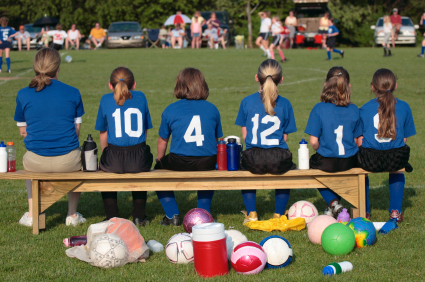Over the winter months of 2011, there were news reports of budget battles across the county: Indiana, Ohio, Florida, and most notably, Wisconsin. These budget woes carried many abstract worries about balanced budgets, corporate tax subsidies, collective bargaining, and varieties of public works projects. In most all of these states, public education was a central issue. 
According the Center on Budget Policy and Priorities, about 26% of state spending goes toward public education, not including state colleges and universities. Vermont is the highest with nearly 35% of its state budget going toward public education. In my state of Idaho, public education is financed at around 23% (according to 2009 numbers from the US Census Bureau).
And over the past winter, with the aforementioned budget issues, our Idaho schools cut back even more on instruction, reducing the amount of money we spend on students. We now are tied for either 49th or 50th place on per pupil spending in the United States. According to the Idaho Statesman, Idaho spends nearly $3000 less per student than the national average.
What does this have to do with sports?
According to The College Board, the premier organization for assisting students to enter college, there is a direct correlation between raising a student’s chances of entering the college of their choice and extracurricular activities. In this regard, athletics is on par with drama, choir, and orchestras. Clubs and student organizations also help. But school sponsored activities carry the seal of approval of a school and carry a degree of authority. Furthermore, the federal government’s guidelines for healthy lifestyles commends vigorous exercise as a means to improve grade point averages. In a press release from the American College of Sports Medicine, “Hit the Treadmill – Not Just the Books”, the link between strenuous exercise and academic achievement was found. This link has been documented for younger students, but these findings
show they continue into the undergraduate years as well.
The solution many states have attempted to implement is a scheme called, “pay to play." National averages for pay to play are around $300 per student per sport. And for many families with students involved in athletics as well as other extracurricular
activities, these costs are prohibitive.
According to the Kentucky State Journal, in Franklin County, Kentucky, some kids may have to pay up to $300 to play sports at any of the local high schools. The Journal reported that Bob Hecker wanted to help kids in a holistic way, “We’re not doing this to play sports, the biggest reason we’re doing this is to keep kids active in school and keep them accountable with their academics. Sports is a good outlet and we didn’t want money to be an issue.”
Last year the Toledo Free Press reported on pay to play fees across the state ranging from a low of $75 per student per sport, up to $375. According to Ed Graney in the Las Vegas Review-Journal, Nevadans will have to pay around $100 per child per sport. But Graney brings up a gender inequality issue to the topic, stating, “When a family is forced to
choose between a brother and sister for pay-to-play, it more often selects the male, setting back gender equity advances that need to remain moving forward.”
In response, some have looked to the legal remedies. Some seek alliances with others. And many simply reach out to their local
communities. Lawyers.com reports that some states may be breaking their own laws with regard to pay to play and recommends citizens to look closely at how the state laws describe these extracurricular activities. Save the Team exists as an organization whose “mission is to support high school sports programs and make athletic activities financially accessible to all students. We promote the significance of youth athletics, raise and allocate financial resources to
maintain high school athletic programs, and provide educational tools for proper physical training, nutrition, and injury prevention." As a non-profit organization, Save the Team is dedicated to teen health and well-being.
For my son and the kids of my friends and neighbors, pay to play translates into more fund-raisers. In the past students had to look for small amounts of money from selling frozen cookie dough and Christmas wrap. Now, the totals needing to be raised are much more significant. And the question remains to be seen, can car washes, discount cards, benefit auctions, and frozen cookie dough off set the lack of state funding?









